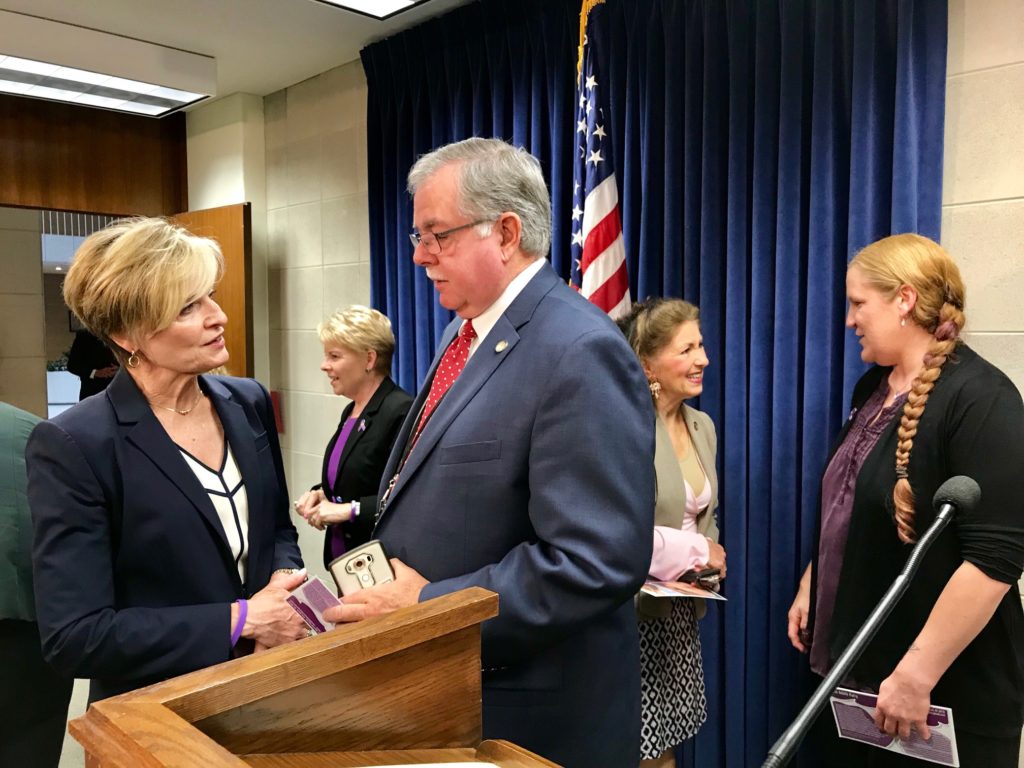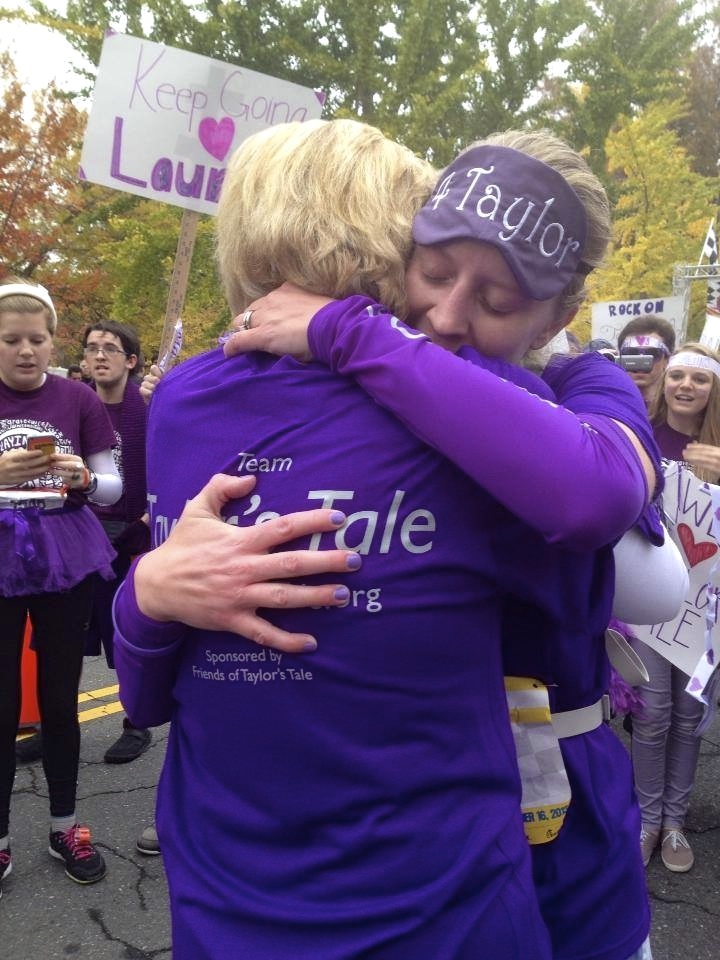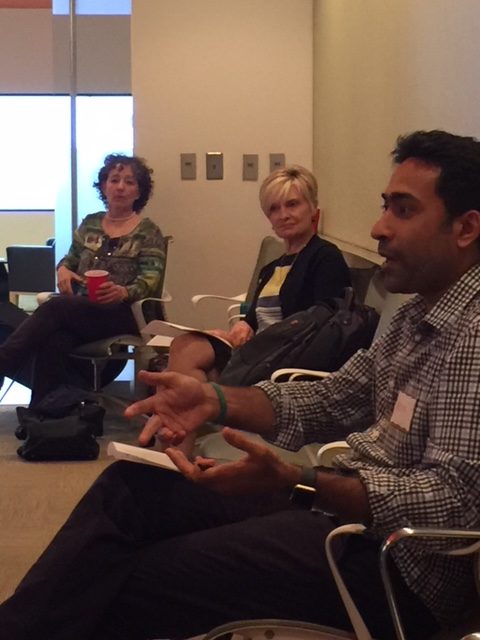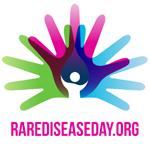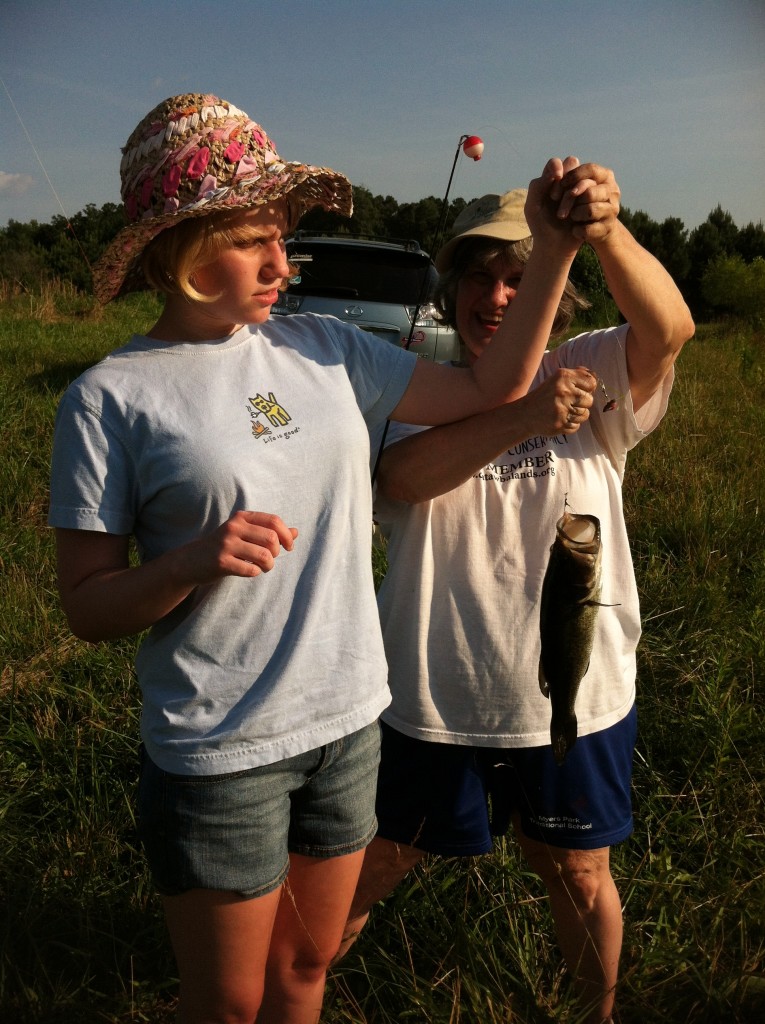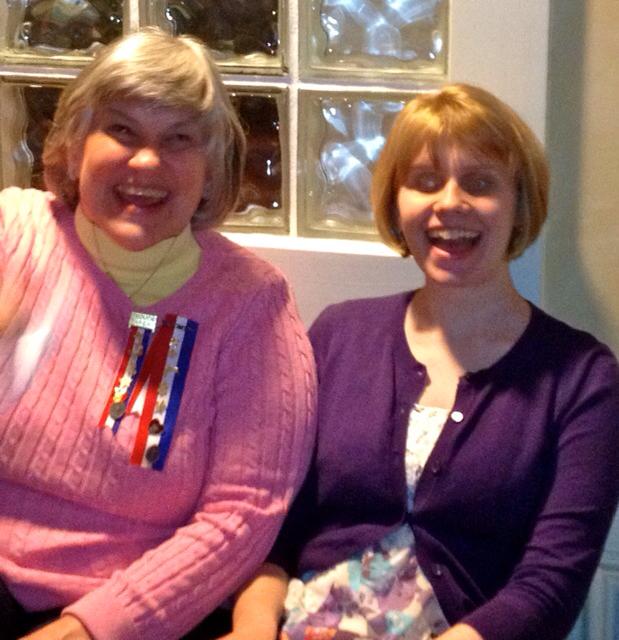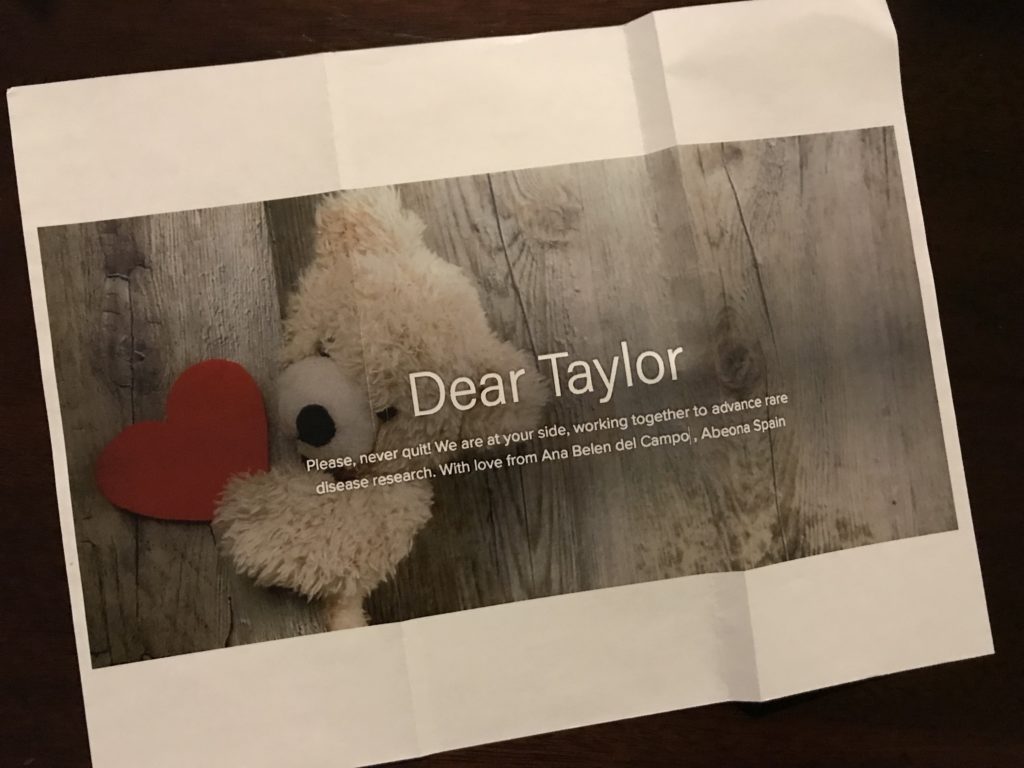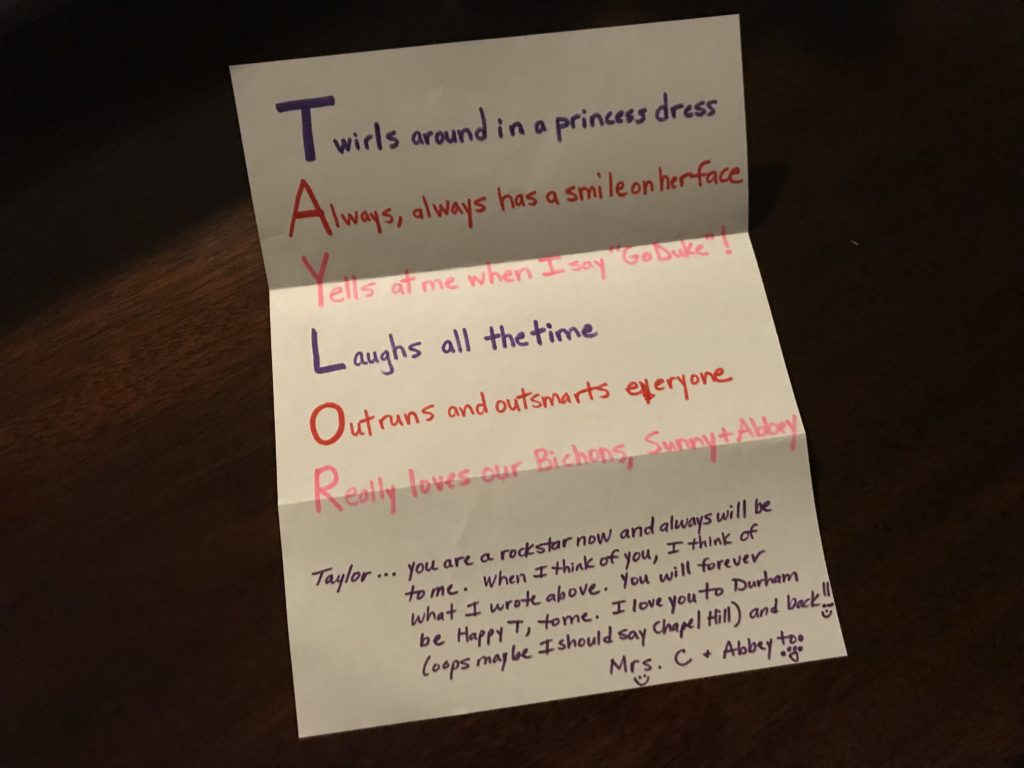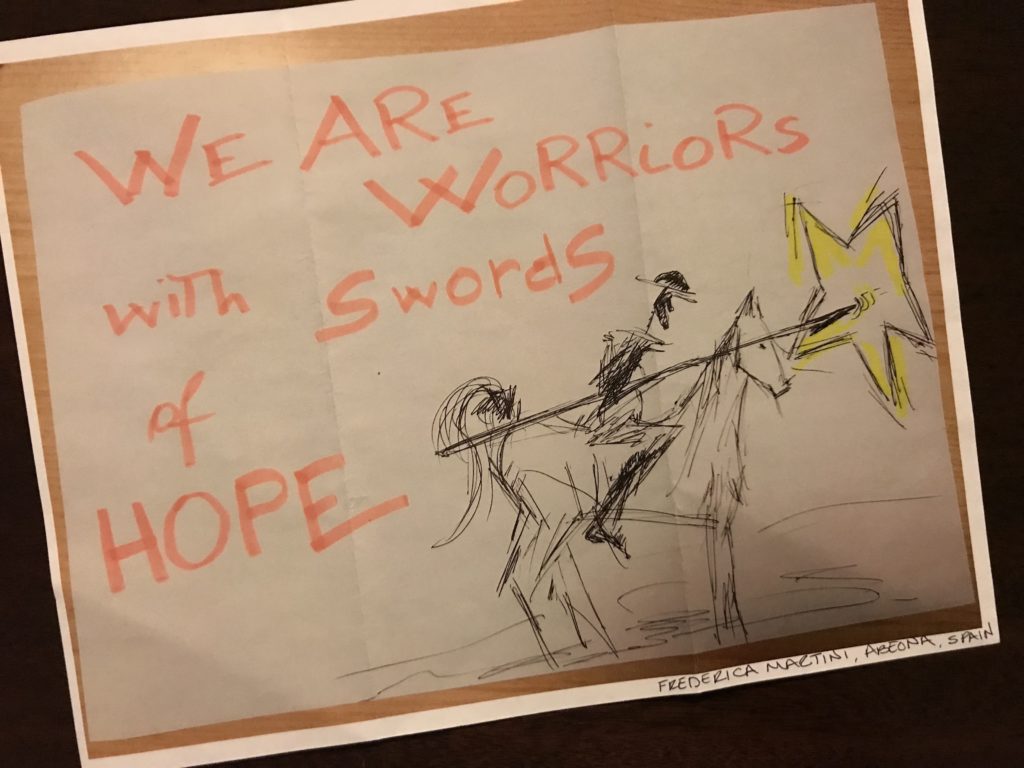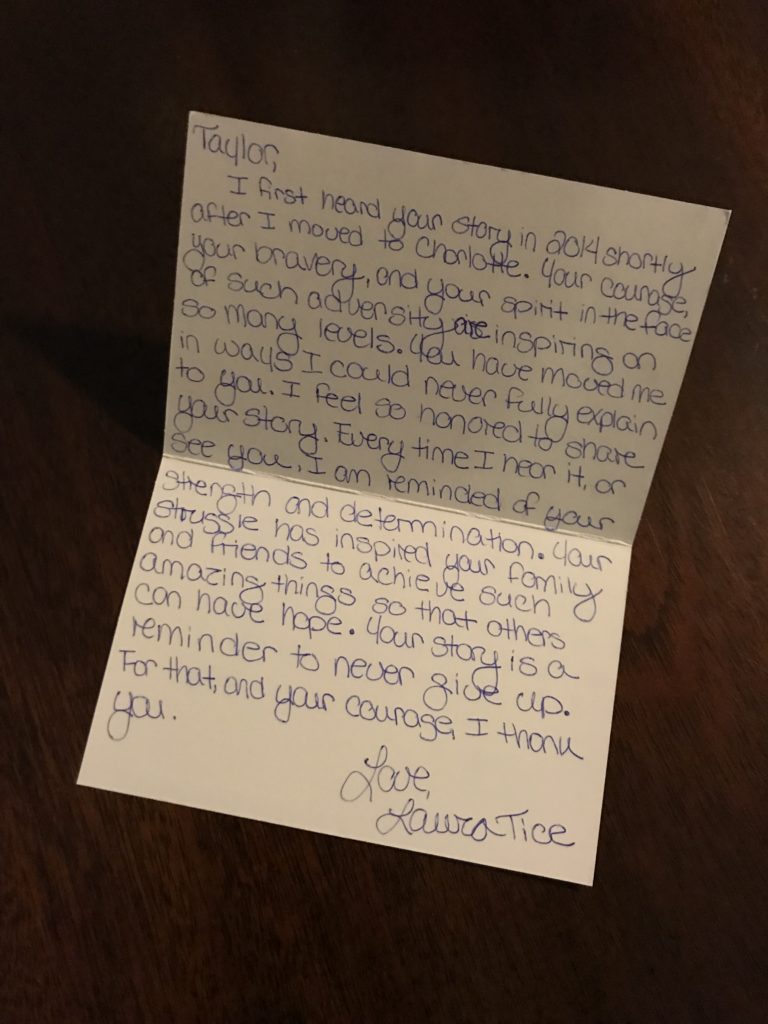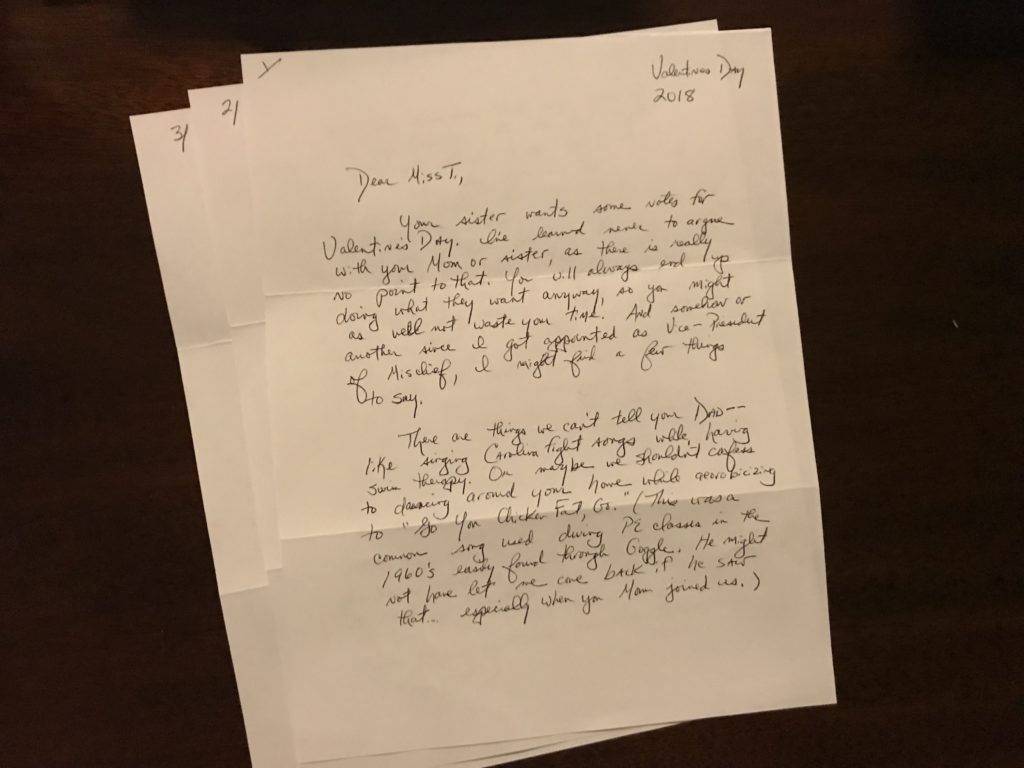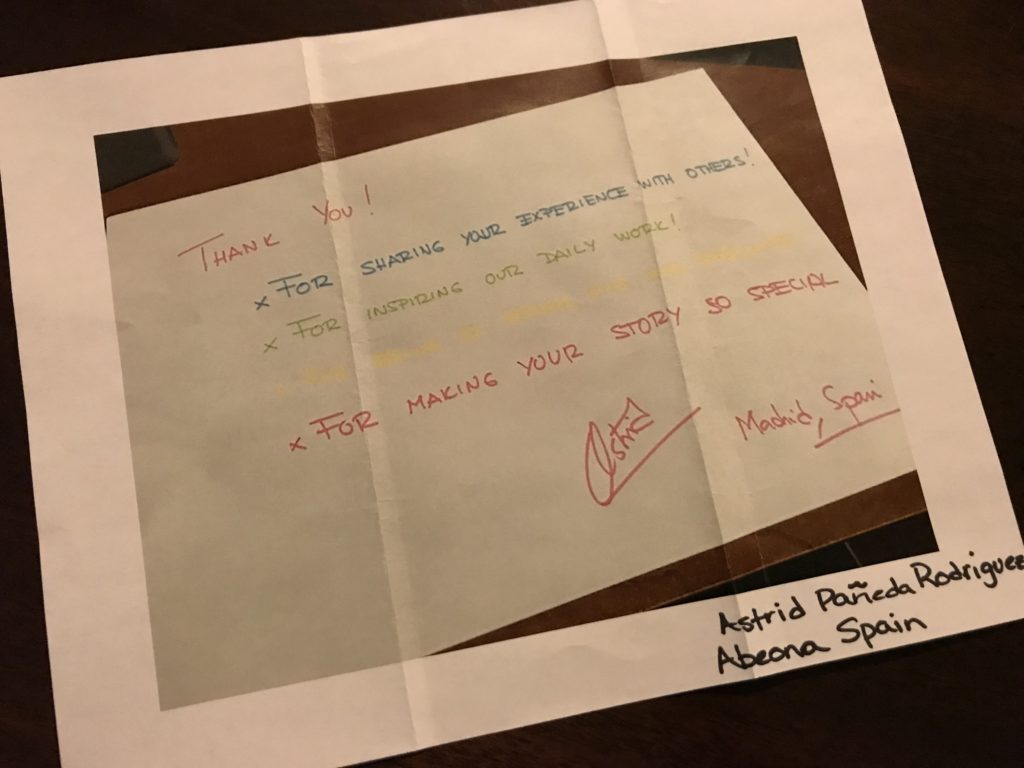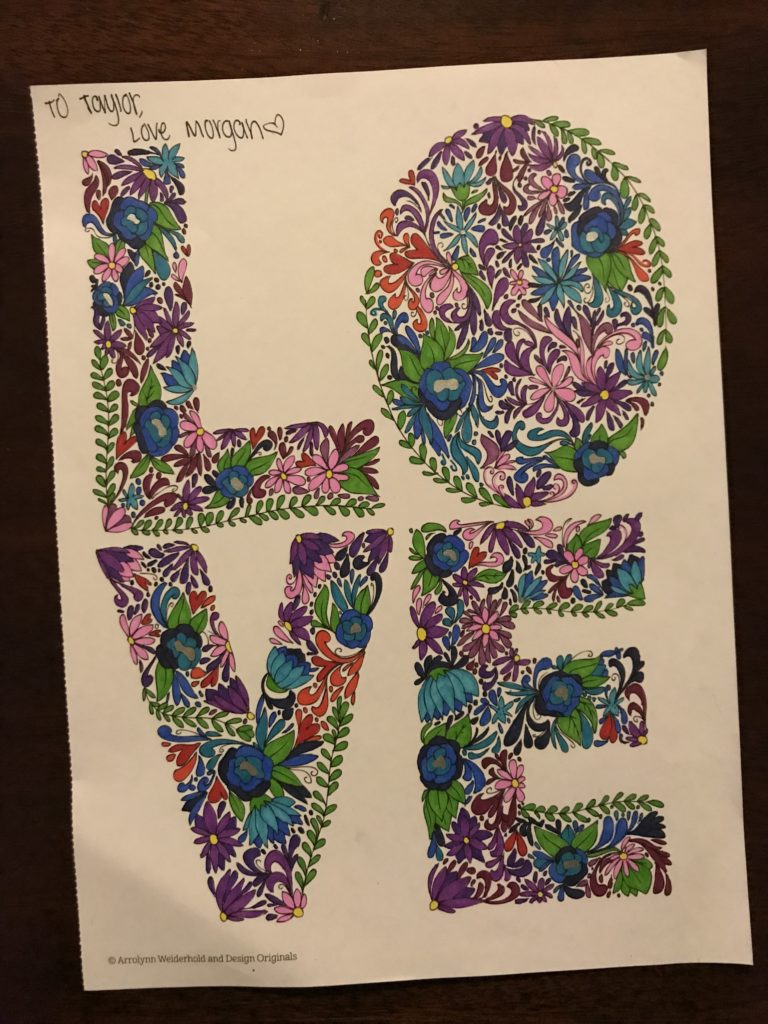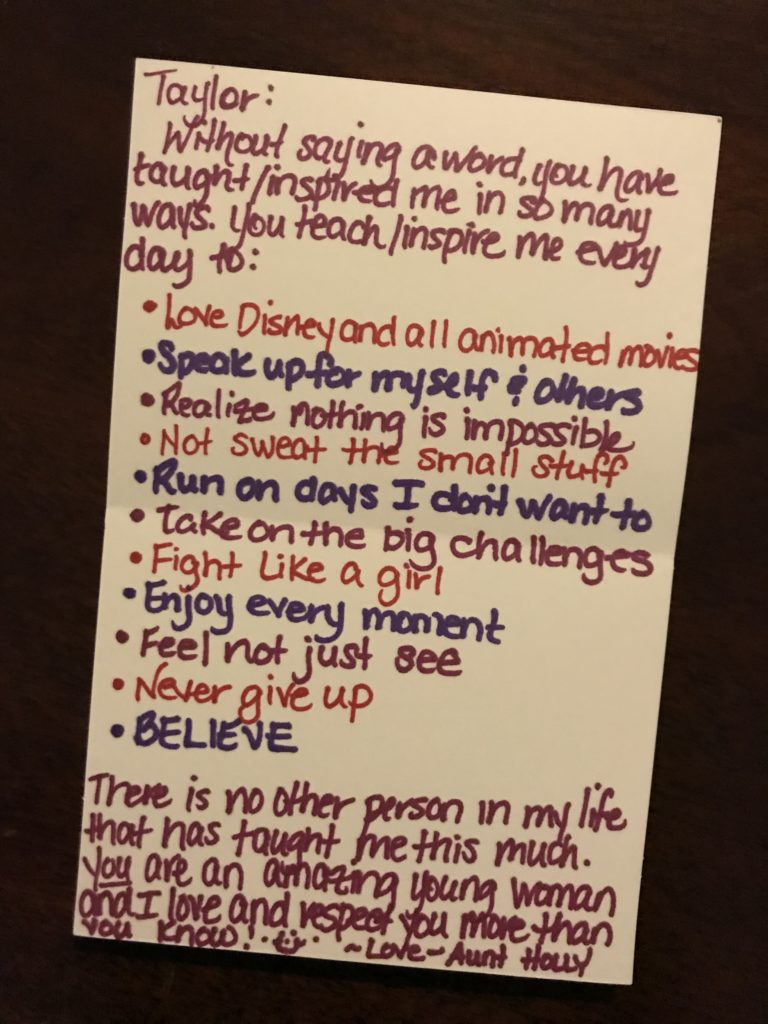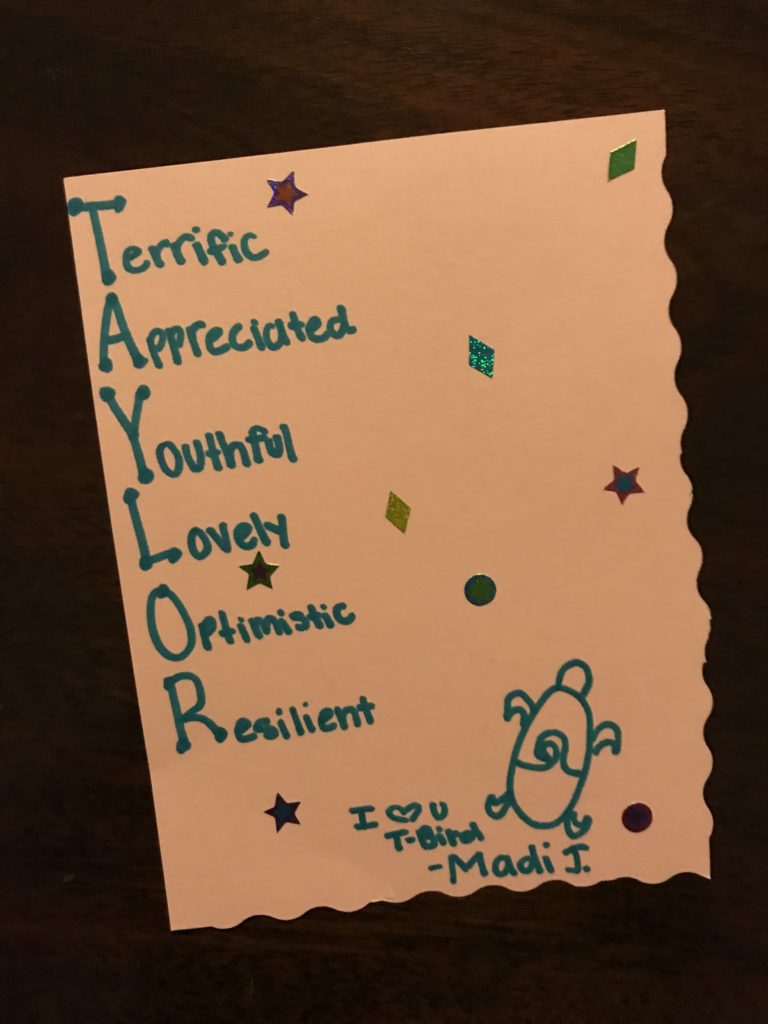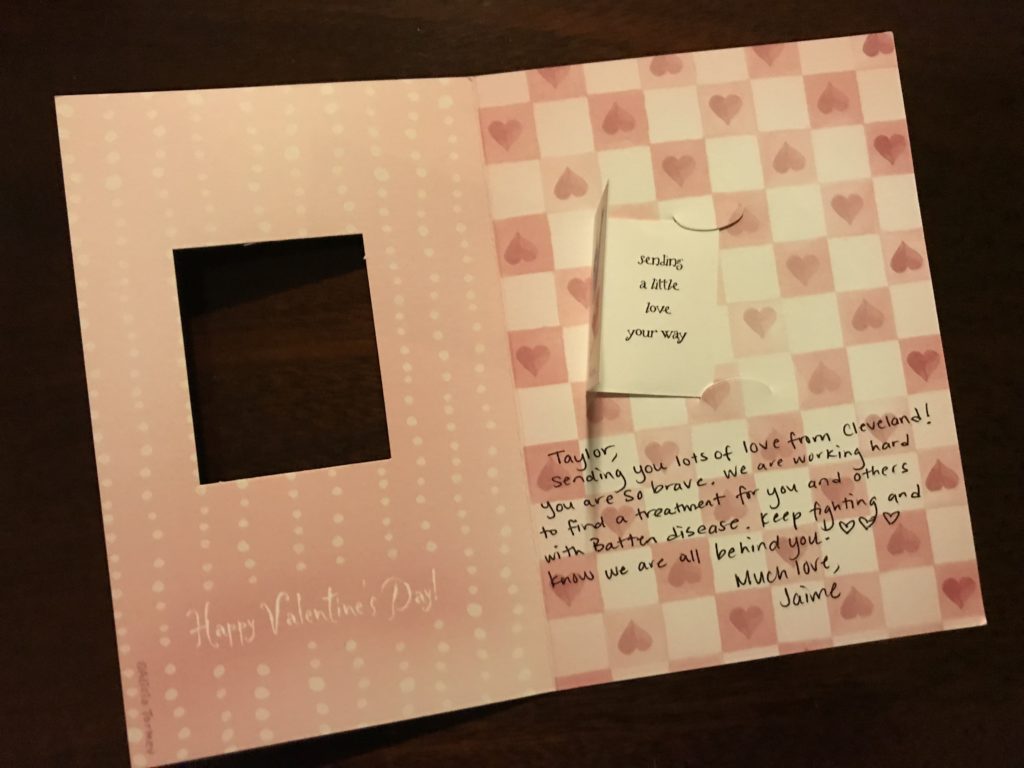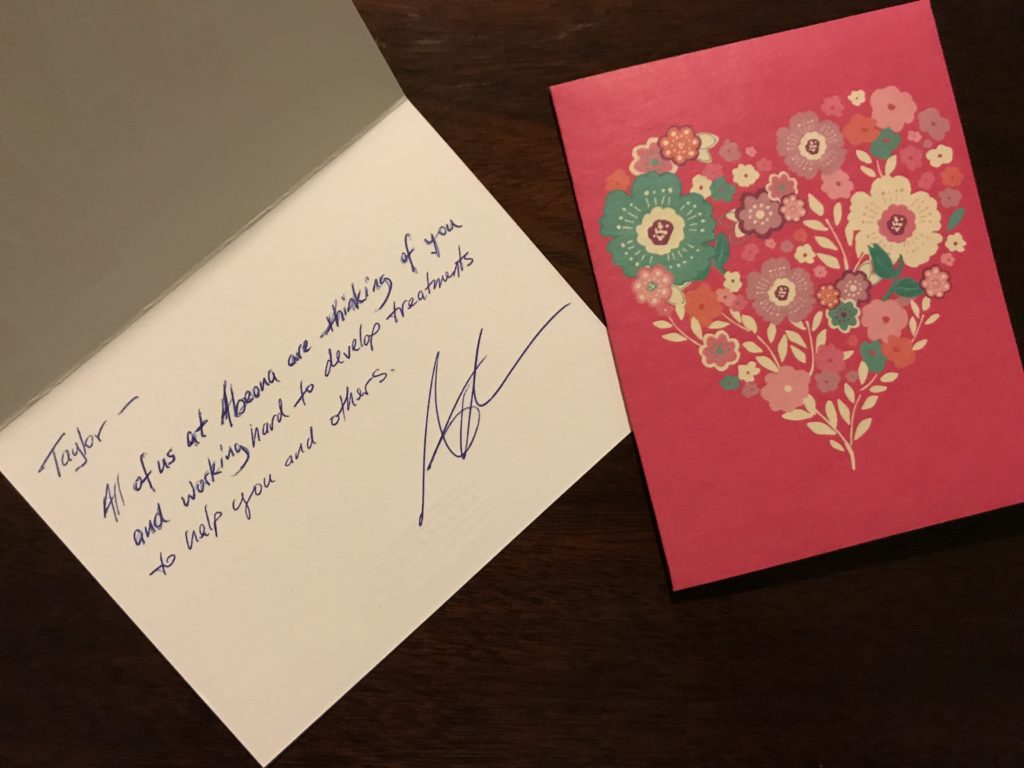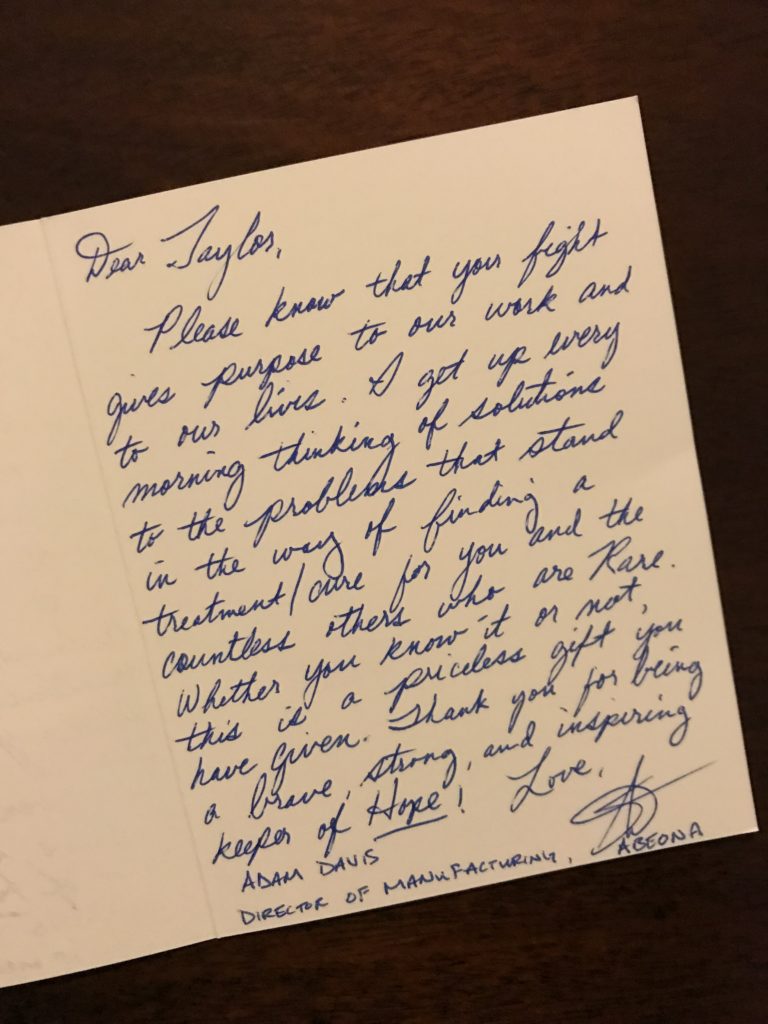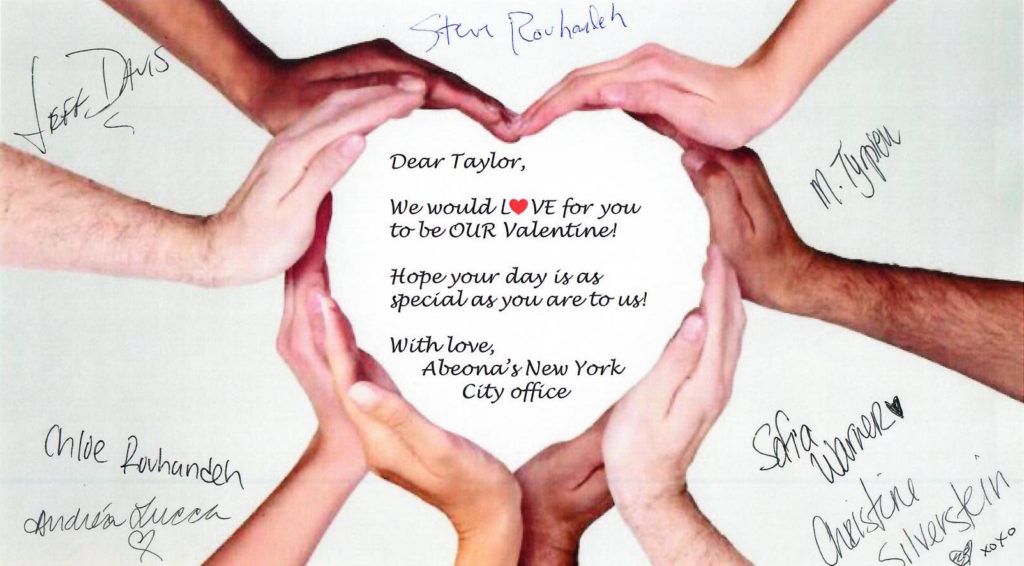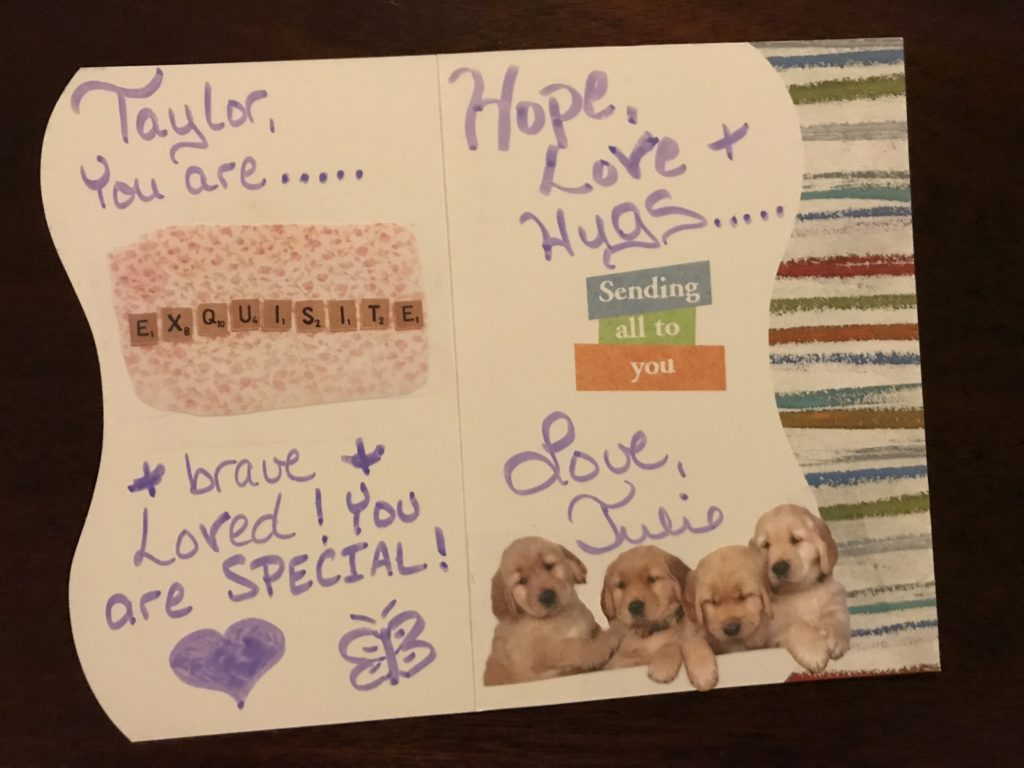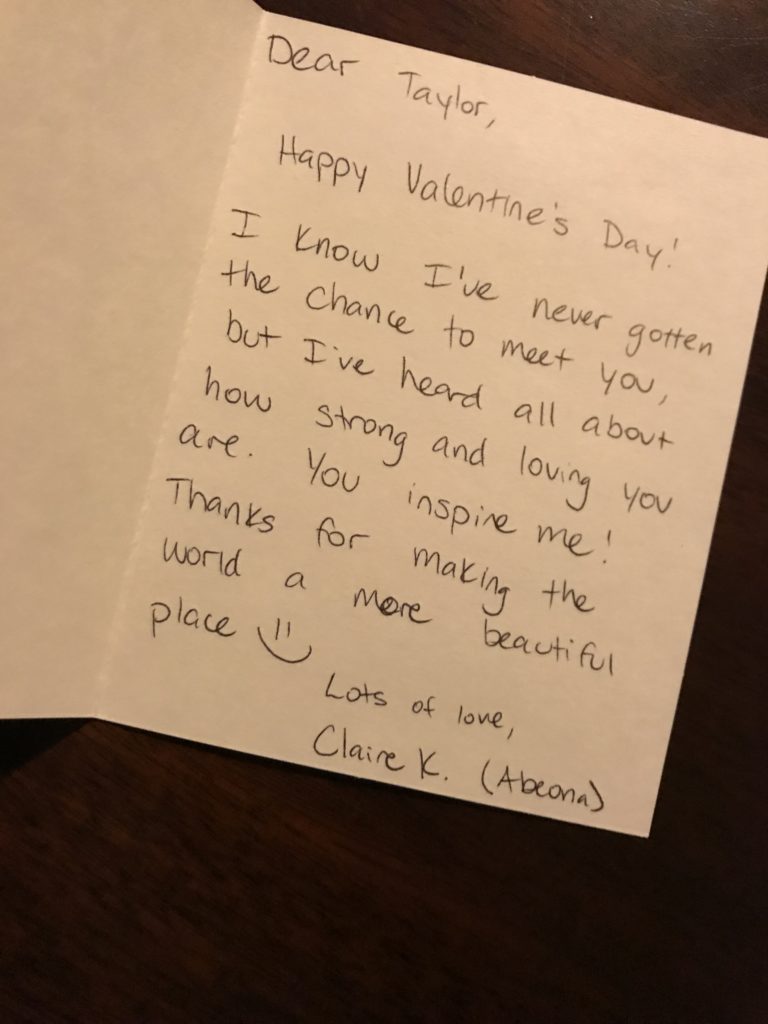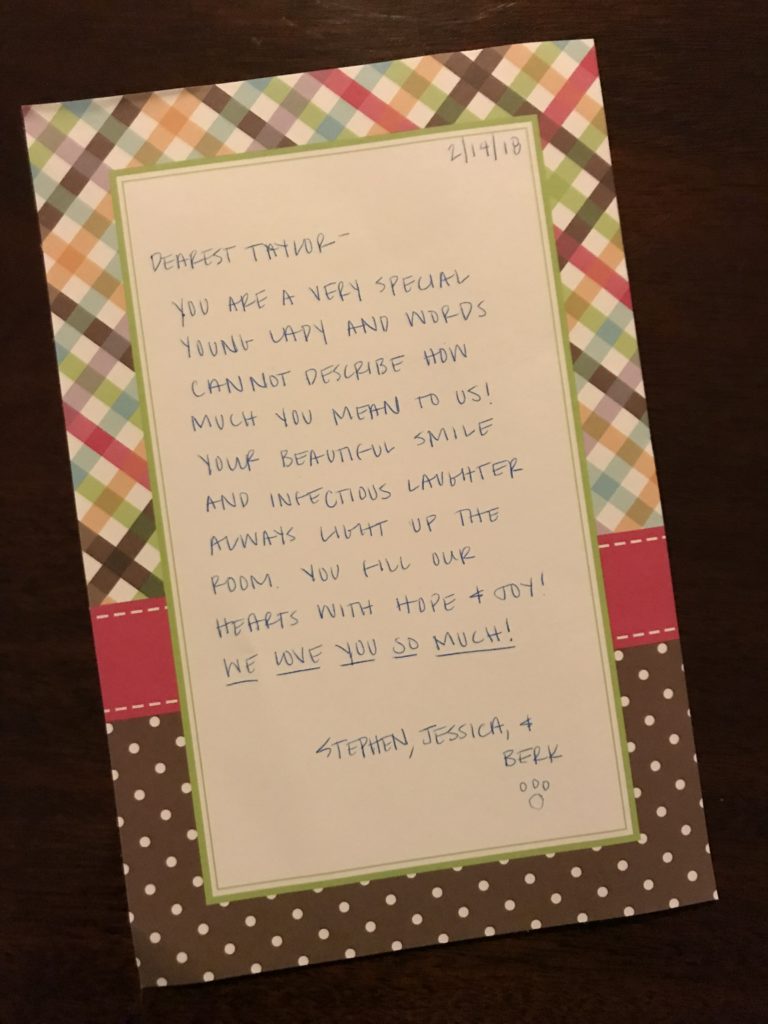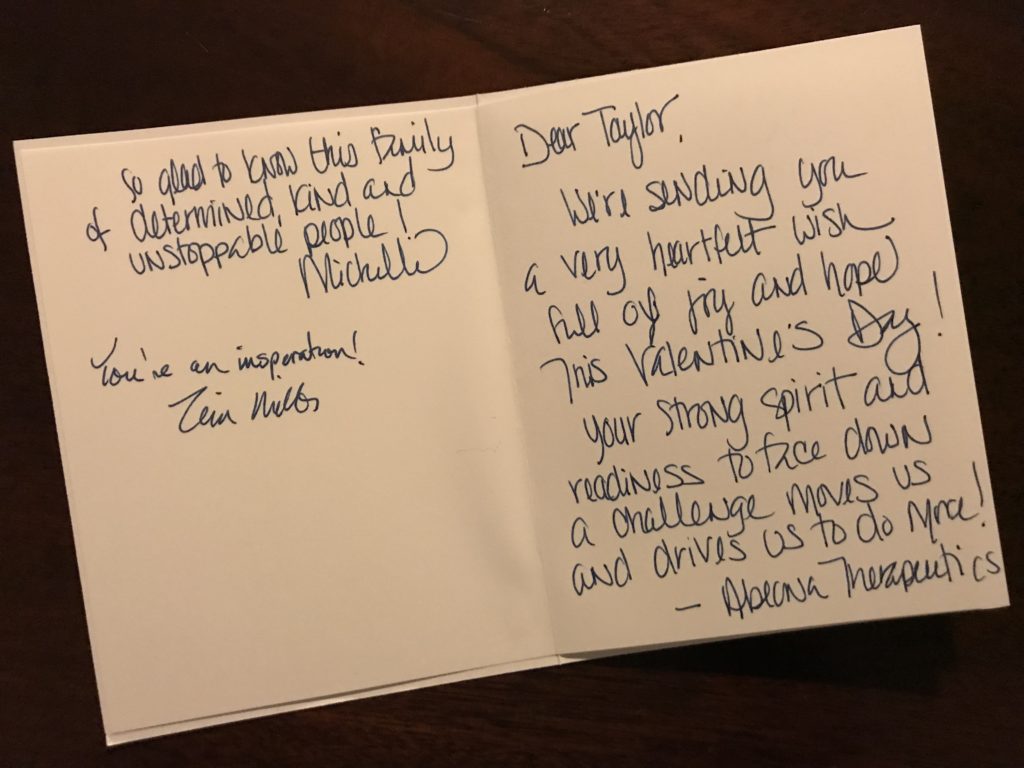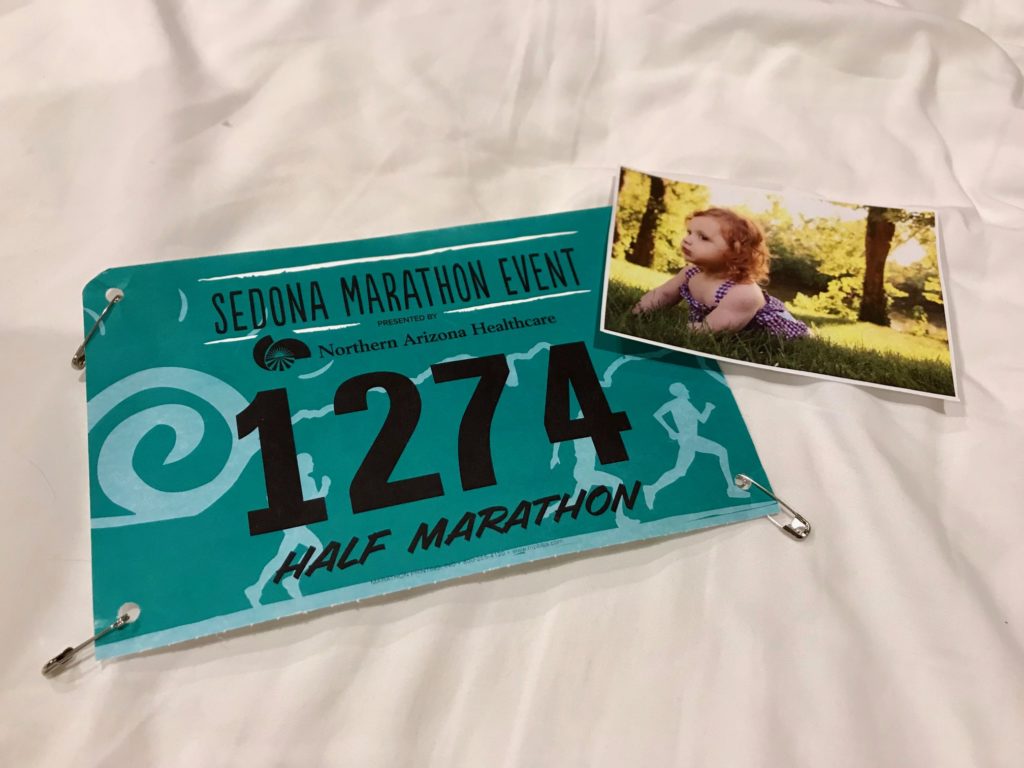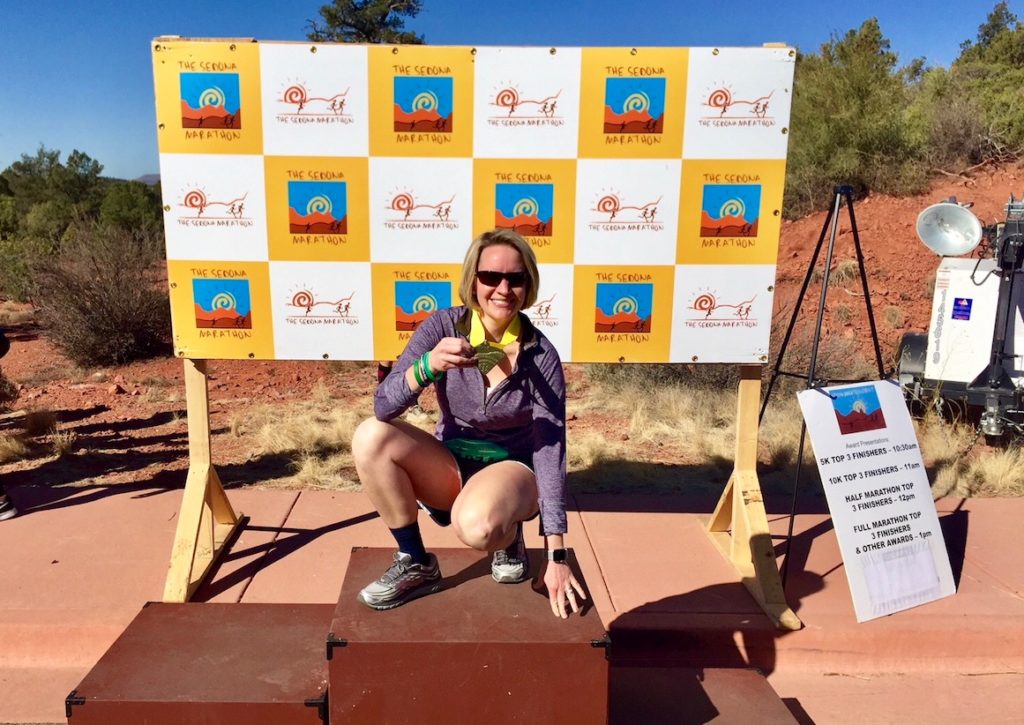In July, I had the amazing opportunity to go to the Batten Disease Support and Research Association (BDSRA) annual conference, attended by affected families, clinical experts, members of industry, researchers and others. Families come for support and to learn more about the fight against Batten disease and resources for their children. For many families, the conference also serves as their yearly vacation, as they are allowed to bring their children who have Batten disease, as well as their siblings. Experts come to teach, gather data and promote their work.
This year’s conference was a neat opportunity for Taylor’s Tale, as Vice President Laura King Edwards got to speak about her upcoming book and blindfolded half marathon, while she and President Sharon King also networked with key contacts to continue advancing Taylor’s Tale’s important work in research and rare disease advocacy.
So, what was my role in all this?
In addition to supporting Laura, Sharon and Taylor’s Tale, I primarily helped BDSRA with childcare, both for healthy siblings and affected children. I could never quite decide how I felt about the term “affected.” On one hand, it’s true: Batten disease has affected these children, chipping away at some of them so much that it’s difficult to see past their illness. But to me, this word also seems to diminish them, taking away from the fact that they are real people and, in most cases, still kids that have thoughts and feelings, even if they aren’t always expressed in the traditional way.
Regardless of labels, I loved working with those who have Batten disease. We had fun doing a variety of activities, and some of them were so creative that they taught me another way of looking at the world. They came up with new ways to play, or they showed bravery as they barreled through the cluttered room, even though they couldn’t quite see everything. And if they fell down, they got right back up and kept playing.
I connected with siblings, too. Siblings as young as 6 can come on these group outings to fun places. The thing I really liked about this program was that some of the older siblings were in charge of how it ran and where the kids went. I got put in charge of five 6-to-9-year-olds for a trip to the Nashville Zoo.
These were the best behaved 6-to-9-year-olds I have ever encountered. On the bus, we mostly talked about their siblings and why I was coming along. It was really neat for me, as a future Child Life Specialist, to hear what it was like to have a sibling with Batten disease. Since the disease is genetic, each of siblings had also gone through testing to see if they would eventually become affected. It was awesome to hear these kids be so vulnerable: how affectionate they are toward their siblings, but also how scared they were to be tested.
Some of these siblings and their parents were at the conference for the first time, and I couldn’t help but think back to the “affected kids” session, and how hard it must be for families to see their future in that room. Some newly diagnosed kids seemed normal, other than the fact that they had to hold toys right up to their face or ask what they were touching. Others were already using wheelchairs, couldn’t speak and ate through feeding tubes. I could only imagine what it would feel like to recognize that that is what is coming for my sibling or child.
During our time at the zoo, the siblings wanted to see every animal, and we ran through the exhibits to make it back in time for dinner. At the end of the day, the zoo closed down so that we could ride the rides without any lines. This was a fun and special experience for the siblings. My group did everything, even if they were scared, because they live with an example of how to conquer fear every day.
The affected kids had music therapy the following day, and that was something else! In a lot of ways, music can reach everyone, because whether you are moving and dancing to it, singing or just listening, it brings a smile or at least ease of familiarity. Music is everywhere, from commercials and elevators to the grocery store. People use music to get pumped up to run or excited to buy something or able to cry after a breakup.
The music therapist working with the group understood the power of music and left an instrument on everyone’s seat but also encouraged them to move or sing if they wanted. She took requests that ranged from Frozen and Moana to Happy by Pharrell. We sang popular new songs and old songs and danced around the whole room. One girl sang as if she was in an opera the whole time. And the best part? These children, and some adults, were allowed to just let loose and be however they needed to be in that moment.
The BDSRA conference always includes a banquet dinner on Saturday night. The affected children are escorted in by siblings or other volunteers as they are announced by an emcee.
I wasn’t sure how I felt about this event and struggled with mixed emotions until I was in the middle of it. I had the honor of pushing the wheelchair of an older boy with Batten disease. I managed to get him in the room and lined up with the others on the dance floor before I really looked around. I had been fine when I was just in a room with the affected kids or out with the healthy siblings, but something about seeing these family members side by side, recognizing the love and the loss on each of the kids’ faces (not to mention those of their parents), will stay with me forever.
To my right, one of the older siblings had tears streaming down his face. His sister was probably in her 20s and in a wheelchair in front of him. In that moment, I recognized that he knew what was in store for her, and that there was nothing he could do about it. It took everything I had to hold back the rushing waves of water that wanted to explode down my face. I hurt for every single family in that room at that moment. It was the kind of pain that did not, and probably will not, go away.
The Sibling Dollar dance brought sweet relief after the kids went back to their families and everyone ate dinner. During this annual dance, people donate money to dance with the siblings. I didn’t have high expectations, as it felt like a lot of people in the room were families, but sure enough, most people brought up at least one dollar. In fact, the siblings raised more than $2,000 in the span of a few songs. Even better? Those from my outing group didn’t leave the dance floor. Instead, they kept dancing and smiling and encouraging their families to dance with them. They requested songs, and their parents recorded them. Some parents jumped in on the slow songs and swayed like it was the first time they had held each other in a long time.
There was such beauty and calm in those moments, and finally, I had to go back to my room and sit with my thoughts for a bit. Emotions like those I felt at the BDSRA conference are what will keep me employed on my journey as a Child Life Specialist. Sitting in my empty room after the dance on the final night, I understood my own greatest lesson from the conference: from the creativity and strength of the affected kids, to the energy and perseverance of their siblings, to my own pain of knowing what families will go through as they all stand together, I understand more clearly than ever that all kids and families touched by Batten disease deserve a better story, and we need to do something about it.

